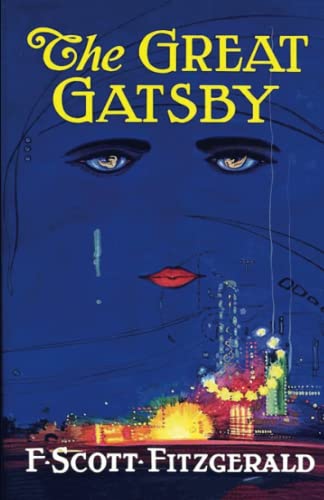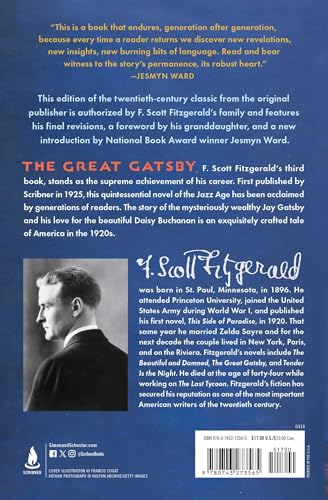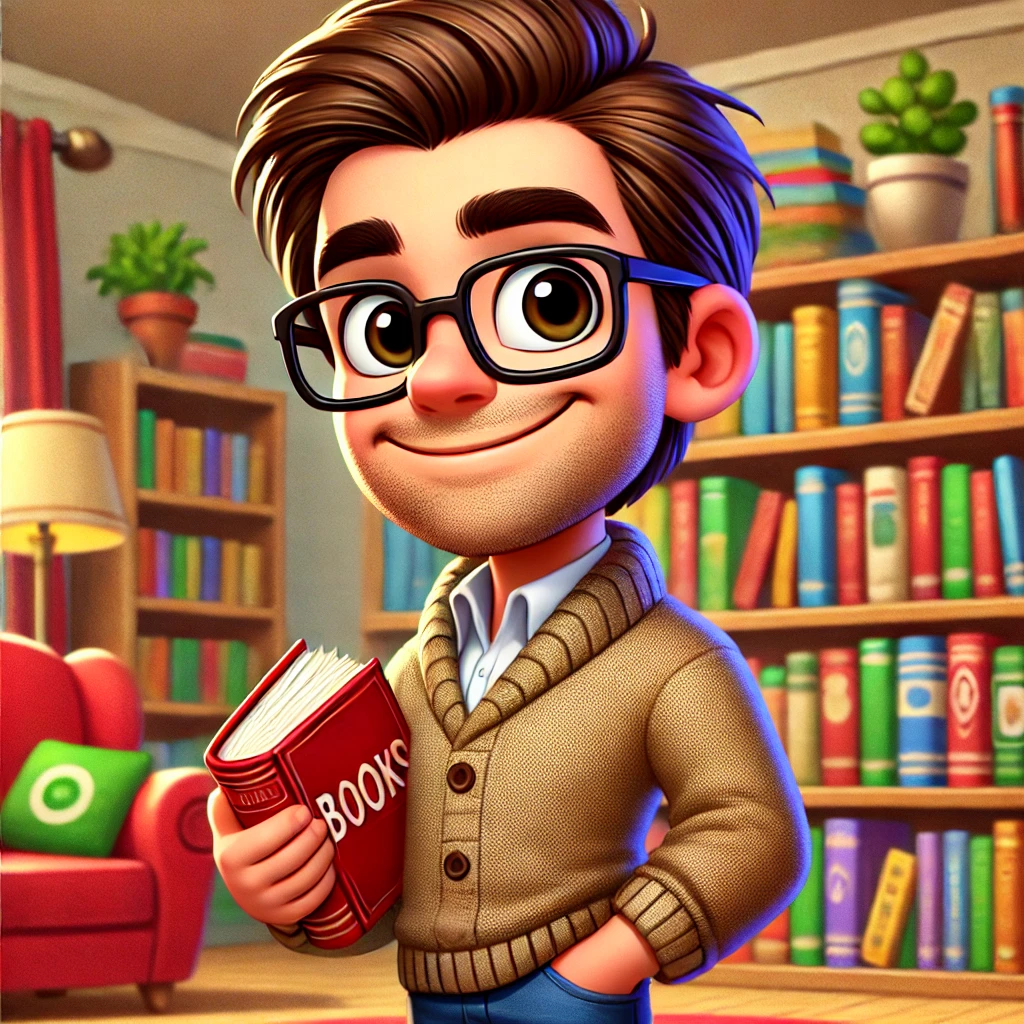Welcome, fellow bookworms! This is my review of a book loved by English teachers and people who think wearing pink suits makes them look rich. Yes, I am talking about the one with wild parties, hopeless crushes, and more green lights than a traffic jam orchestra. If you’ve ever wondered what happens when you mix big dreams with too much champagne, keep reading. I promise an honest, funny take on all the glitz, glamour, and heartbreak hiding in these pages.
In a nutsheel
The Great Gatsby is a classic American novel written by F. Scott Fitzgerald. The book belongs to the literary fiction genre, but don’t let that scare you. It’s not all stuffy—there are wild parties, shady deals, and enough fancy cars to make any car fan jealous.
The story follows a mysterious millionaire named Jay Gatsby, who throws the most over-the-top parties in New York, hoping to catch a special someone’s eye. Through the eyes of his neighbor, Nick Carraway, you get to see all the drama, romance, and ambition of the Roaring Twenties. Themes like love, betrayal, wealth, and the idea of the American Dream run strong the whole way through. It’s moody, it’s jazzy, and it asks big questions about what makes people truly happy—without giving you a headache.
The Glitter and Grit of Gatsby’s Parties and Flamboyant Ways
If I got a nickel every time someone asked me about a wild night, I’d nearly come close to Jay Gatsby’s pocket-money. In The Great Gatsby, Gatsby’s parties are not just fancy—they’re outrageous. Picture this: A hundred people you’ve never met before, champagne fountains, and music that makes your feet dance even if you have two left ones. My own house parties look more like bingo night at grandma’s compared to what Gatsby pulls off.
People came from all over just to get a peek of Long Island’s shiniest man. I swear, the only invite you needed was curiosity and maybe a decent hat. There’s rivers of alcohol, (no Prohibition worries here, officer), trays filled with food I can’t even pronounce, and a dance floor that probably has its own zip code. The whole place glows under fancy lights, and the only thing brighter than Gatsby’s smile is the hope that maybe, just maybe, he’ll say hi to you himself.
The upside? The parties are a blast and you never feel left out. People chat with strangers like they’re old college buddies—even if they secretly don’t know the host’s first name. And the fireworks! My neighbor once called the fire department thinking the world was ending.
But, let’s be real—there’s a downside too. All that flash hides the fact that Gatsby is a pretty lonely guy. Most folks at these parties wouldn’t recognize him if he poured them a drink himself. It’s all sparkle, but not a lot of heart.
Next, we’ll pull back the curtain on the real show—the twisty, sappy, and sadly doomed romance between Daisy and Gatsby. Grab your tissues, and maybe a flashlight, because it’s about to get emotional and a little dark!
The Heartbreak Hotel: Daisy and Gatsby’s Tragic Tango
If someone ever tells you that money buys happiness, hand them a copy of The Great Gatsby and watch their jaw drop. Daisy and Gatsby are the poster kids for heartache with a side of glitz. Gatsby, that big dreamer, builds his mansion and holds those wild parties all for Daisy. He thinks he can turn back time just because he’s got fancy shirts. (Trust me, I tried with my own sock drawer. Didn’t work.)
Daisy is more complicated than a TV remote with missing batteries. She wants to love Gatsby, but she’s stuck with Tom and his money—and his ego the size of Long Island. Their romance is a lot like a soda you left open overnight: it looks sweet, but there’s no fizz. Every time Gatsby tries to win Daisy, the past gets in the way, like stepping on a LEGO in the dark. Ouch. Their secret meetings are full of hope, but you know disaster is coming, just like the ending of every diet I’ve ever tried.
The real tragedy? Gatsby loves a Daisy that might not even exist—just his idea of her. They chase each other in circles and end up nowhere. By the end of the book, your heart hurts worse than after a double cheeseburger, extra onions. But before we start passing the tissues, let’s tip our hats to Fitzgerald’s magic tricks with words, because next up, I’ll be talking about the wild ride that is his writing style and narration. Get ready!
Fitzgerald’s Writing Style and the Magic of Narration in The Great Gatsby
Let me be honest, friends, if you want a book with fancy language that somehow still feels easy to read, The Great Gatsby is the one. Fitzgerald’s style is sharp as a fresh haircut, but never gets so clever that you need a dictionary in your lap. He seems to sprinkle his words with magic dust so you remember lines like, “So we beat on, boats against the current…” My friend tried to sound smart quoting that at a party, but he totally flubbed it. Still, even in error, the words have power!
Now, about the narration. Instead of giving us Gatsby’s wild story straight from the man himself, Fitzgerald tosses in Nick Carraway, the Midwest transplant who’s just as confused by East Coast glamour as I am about TikTok dances. Nick is the ultimate wallflower, the guy at the party who hugs the punch bowl and silently judges. This makes him the perfect narrator. He sees and hears everything—the sparkle and the scandal—but he never quite fits in. There’s a lot he doesn’t say out loud, which lets readers fill in the gaps. It’s like being at a party and hearing juicy gossip through a cracked door. You never get the full picture, but it’s more fun that way.
Fitzgerald’s lively descriptions, quick wit, and clever use of symbols make The Great Gatsby feel like a painting that changes every time you look at it. Just when you think you’ve figured out what the green light means, boom—some new meaning pops up!
Buckle up, because next we’ll be rolling down the road of dreams—the American Dream, that is, with all its ups, downs, and shattered windshield dreams!
The Rise and Fall of the American Dream in The Great Gatsby
Alright, time to talk about the big flashy dream in the room: the American Dream. If you’ve ever wanted to reach for the stars, get rich quick, or buy a yellow car that screams “look at me!” this is your section. In The Great Gatsby, Jay Gatsby is one determined fella. He goes from farm boy to fancy mansion owner, all in the name of self-made greatness.
Here’s the thing, though. The American Dream looks wonderful on the surface—fancy clothes, wild parties, and more money than you know what to do with. But reading this book with my friends, it hit me: all that shiny stuff is just a cover. Gatsby worked his tail off (not always in the most honest ways, but hey, nobody’s perfect) to win back Daisy and have it all. Yet, no matter how much he gets, happiness remains just out of reach—like trying to grab the last cookie in the jar when you have giant hands.
Fitzgerald doesn’t pull punches. He shows us how the dream can turn sour. You get rich, but you also get loneliness, fake friends, and lots of trouble. The fall is real, folks. Some of my pals thought Gatsby had it made, but by the end, we all agreed—catching the dream can leave you emptier than before.
So—do I recommend The Great Gatsby? If you like stories that make you laugh, sigh, and think about life’s big questions, give it a shot. Just don’t expect to find the meaning of life at the bottom of a champagne glass.
Conclusion
Well folks, that wraps up my wild ride through The Great Gatsby. Fitzgerald hits you with glitz, heartbreak, and enough green lights to make a traffic cop faint. The parties are legendary, the romance is tragic, and the American Dream is a bit of a letdown (just like my attempts at making a soufflé). While the writing can get a bit fancy and Nick likes to judge from the sidelines, there’s a reason people keep reading this book nearly a hundred years later. If you like old-school drama and sparkly scenes with a twist of sadness, give Gatsby a go. Thanks for sticking with me through the jazz, drama, and awkward pool scenes—this concludes my review!



